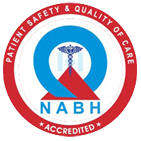FOLLOW THE MISSION HOSPITAL




An adenoidectomy, or adenoid removal, is surgery to remove the adenoid glands. The glands are located above the roof of your mouth, behind the nose. They look like small lumps of tissue.
Sometimes, when the adenoids become enlarged and inhibit a child’s breathing or lead to ear infections, they need to be removed in an adenoidectomy.
An adenoidectomy is mostly done in children between ages 1 and 7. By the time a child is 7, the adenoids begin to shrink and are considered a vestigial organ in adults (a remnant with no purpose).
Adenoids may look like small lumps of tissue, but these glands serve an important purpose in young children. They are part of the immune system and help protect the body from viruses and bacteria. However, removing them has not been shown to affect a child’s ability to fight infections.
Adenoids begin to shrink around age 5 to 7 in children, and will be almost completely gone by the teenage years. Adenoids are not visible in most adults.
Sometimes, a child’s adenoids may become swollen or enlarged due to an infection or allergies. Some children may also be born with abnormally large adenoids.
When a child’s adenoids become enlarged, they can cause problems by partially blocking his or her airway. This can result in difficulty breathing through the nose that can lead to snoring or more serious conditions such sleep apnea (stopping breathing) at night. Chronic nasal drainage can also be seen.
Enlarged adenoids can also contribute to chronic ear infections and lead to fluid in the ear that can cause temporary hearing loss.
Adenoid problems can also contribute to chronic tonsillitis (swelling of the tonsils, which are soft tissues located near the back of the mouth).
If you suspect your child may have enlarged adenoids because of problems with their breathing or ears, you should consult your doctor. After taking a health history, he or she will examine your child’s adenoids using a small light and reflecting device.
Based on your child’s symptoms, if their adenoids appear enlarged, your doctor may recommend their removal.
An adenoidectomy is a simple, relatively short procedure usually done on an out-patient basis by an ear, nose, and throat (ENT) surgeon. Your child will be placed under general anesthesia for the procedure.
During surgery, the doctor will hold your child’s mouth open with a small tool. He or she will then remove the adenoids using one of several techniques. The doctor may use an electrical device to help stop the bleeding.
Your child will then be taken to a recovery room until they awaken from the anesthesia. Most children will be able to return home later on the day of their surgery.
The risks of an adenoidectomy are rare but include:
Your doctor should thoroughly explain all of the risks of adenoid removal and answer your questions before you agree to the procedure.
A full recovery to a healthier life with far fewer breathing and ear problems is almost always achieved after an adenoidectomy. Your child may temporarily experience a sore throat, earaches, bad breath, or stuffy-feeling nose as they recover.

A Unit Of Durgapur Medical Centre Pvt. Ltd.